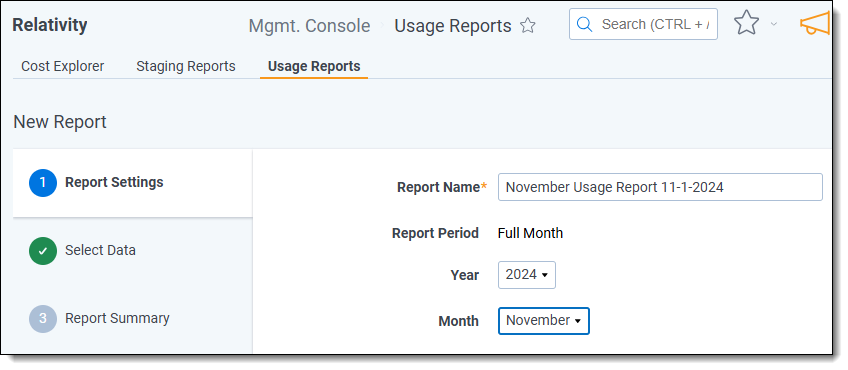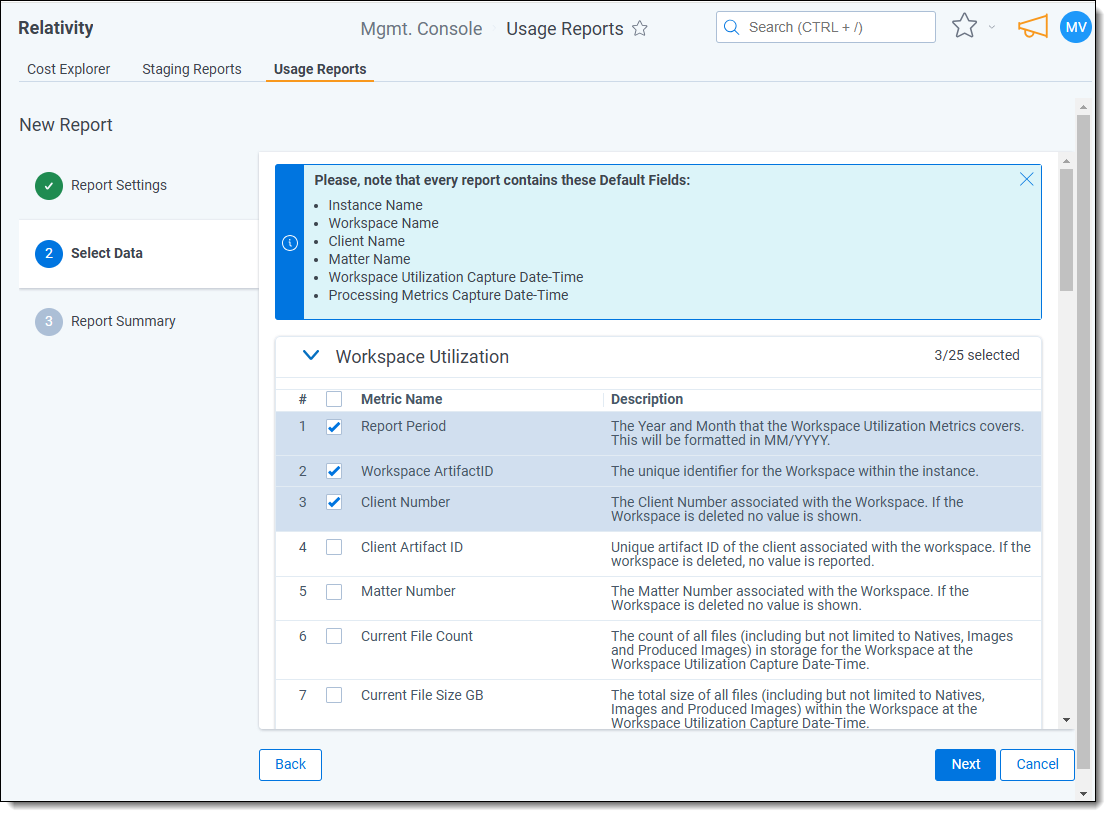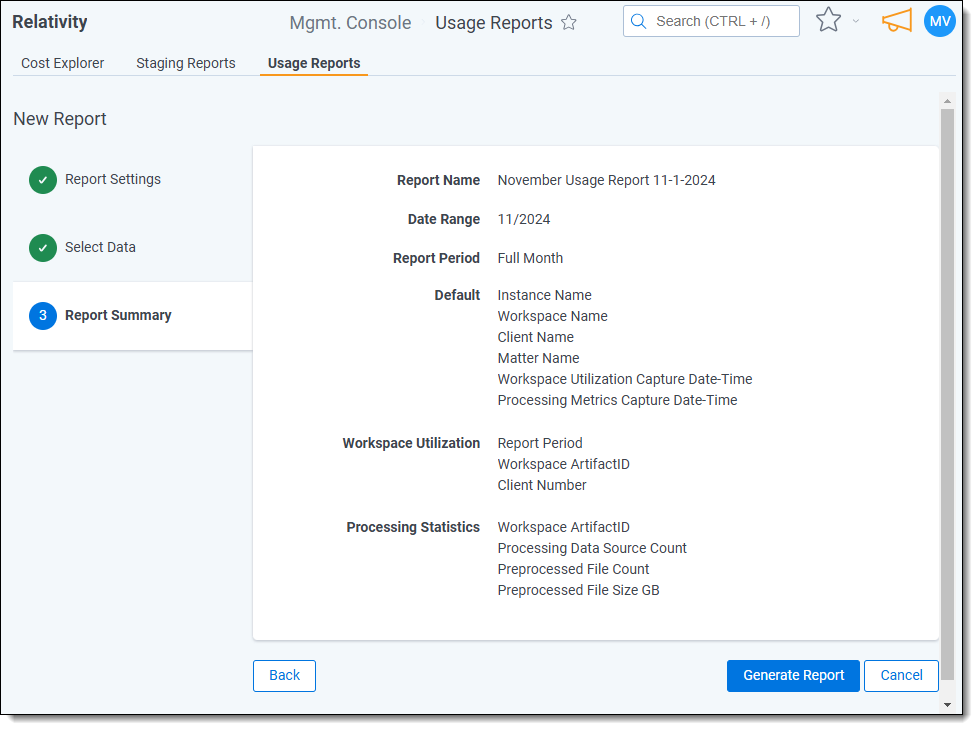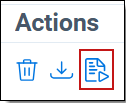Last date modified: 2026-Jan-07
Usage Reports
Usage Reports is the modern way to gather information and gain oversight across your instance. Typically, metrics presented in Usage Reports are used for end-client billing, tracking adoption, and general usage metrics. System and Client Domain Administrators can create custom reports at the instance level to report on their workspace utilization and Processing consumption metrics for billing and usage tracking.
For a complete list of fields available in the Usage Reports, see the Community article.
Permissions
System Administrators and Client Domain Administrators need the following minimum Instance-level security permissions to access and generate Usage Reports. Users must belong to a group that is added at the instance level and has access to the tabs. Assign the permissions below to a group, and designate it for System Administrators or Client Domain Administrators. For more information on how to set the right permissions, see Setting instance permissions.
| Tab Visibility | Admin Operations |
|---|---|
| Management Console and Usage Reports |
|
Creating Usage Reports
To create a new Usage Report:
- Navigate to the Usage Reports tab in Management Console. For more information, see Navigation or Management Console.
- Click New Report.
- Enter or select values for the following fields:

- Report Name—enter a unique name to identify the report.
- Year—select the year you wish to report on.
- Month—select the month you wish to report on.
- Report Type—select Workspace or User.
- Workspace— a comprehensive report on all workspaces, focusing on their usage and processing during a specific month. This report will include metrics on workspace activity, product usage, and data processing volumes. When a workspace is deleted, the Client/Matter Name and ID are removed from reports. As a result, Client Domain Administrators will not see any deleted workspaces in the Usage Reports they generate, since we cannot associate the workspace with the Client Domain.
- User—a report on users with Relativity access enabled during the chosen month, highlighting their activity and workspace assignments.
- Workspace— a comprehensive report on all workspaces, focusing on their usage and processing during a specific month. This report will include metrics on workspace activity, product usage, and data processing volumes.
- Click Next.
- On the Select Data tab, choose the desired metrics under the Workspace Utilization, Product Utilization, and Processing Statistics sections that you want to include in the report. You must choose at least one field in any of the sections. To select all metrics in a section, click the checkbox next to the Metric Name column heading.

Every Workspace report will contain these fields by default:- Instance Name—the RelativityOne Instance from which the report was generated.
- Workspace Name—the name of the Workspace.
- Client Name—the name of the Client associated to the workspace. If the workspace is deleted, no value is shown.
- Matter Name—the name of the Matter associated to the workspace. If the workspace is deleted, no value is shown.
- Workspace Utilization Capture Date-Time—the date and time that all the Workspace Utilization metrics were captured from the Instance. This value is shown in UTC.
- Processing Metrics Capture Date-Time—the date and time that all the Processing metrics were captured from the Instance. This value is shown in UTC.
Every User report will contain these fields by default:- User Email Address—the RelativityOne Instance from which the report was generated.
- Enabled User Information Capture Date/Time—the name of the Workspace.
- Review the information on the Report Summary tab to confirm the report criteria is correct. To make changes, click the Back button or click any of the side tabs to go to those sections.

- Click Generate Report to create the report. The newly created report appears on the Usage Reports List. Reports are retained on the list for 30 days from their creation date. Click the template icon to run a Usage Report based on a previous report. The system automatically fills in all key fields. You can also use the actions bar to delete or download reports.


- Click the report name link to view its details in the report viewer. For a complete list of fields available in the Usage Reports, see the Community article.

- All “Peak” references pertain to the individual peak value per workspace in the reported date range.
- Processing metric fields show the total size/values for the given date range.
- File categorization is as follows: Native files include Native and transcripts; Image files include TIFF and PDF files; and Production files include Stamped TIFF, produced PDF, and produced redacted natives.
- Depending on your security configurations in RelativityOne, some workspaces may display hashed values for Client Name, Matter Name, Client Number, and Matter Number fields. This happens when no processing occurs for a workspace and hashing is enabled. For more information, see Hash value instance settings for billing metrics.
Data freshness and expected delays
Usage Reports may not show data immediately after capture.
In rare cases, Usage Reports can be up to 48 hours behind the live system. This typically happens when:
-
A report runs just before the nightly data-collection.
-
The scheduled aggregation job for your instance hasn't finished yet.
Every report includes two time-stamp fields that show exactly when the data set was pulled:
Check these fields to confirm how current a given report is.
Exporting Usage Reports
You can export a report to an Excel file from the following areas:
- From the Usage Reports List: Click the download icon in the Actions column corresponding to the desired report.
- From the report viewer page: Click the Export button.







